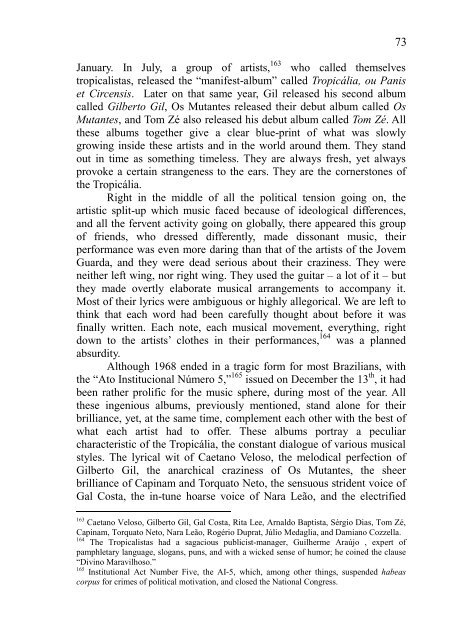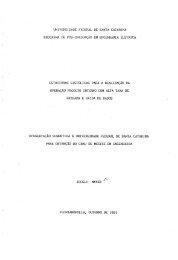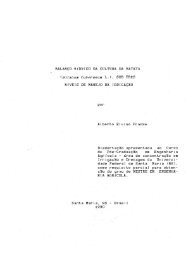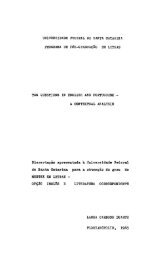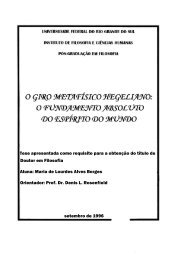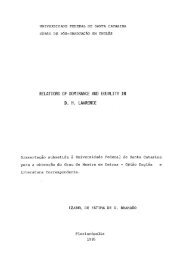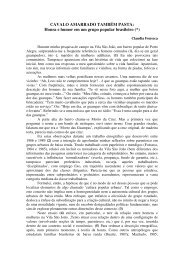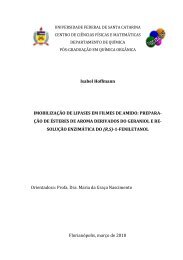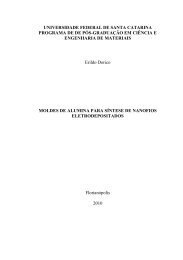Tropical ginsberg
Tropical ginsberg
Tropical ginsberg
You also want an ePaper? Increase the reach of your titles
YUMPU automatically turns print PDFs into web optimized ePapers that Google loves.
January. In July, a group of artists, 163 who called themselves<br />
tropicalistas, released the “manifest-album” called Tropicália, ou Panis<br />
et Circensis. Later on that same year, Gil released his second album<br />
called Gilberto Gil, Os Mutantes released their debut album called Os<br />
Mutantes, and Tom Zé also released his debut album called Tom Zé. All<br />
these albums together give a clear blue-print of what was slowly<br />
growing inside these artists and in the world around them. They stand<br />
out in time as something timeless. They are always fresh, yet always<br />
provoke a certain strangeness to the ears. They are the cornerstones of<br />
the Tropicália.<br />
Right in the middle of all the political tension going on, the<br />
artistic split-up which music faced because of ideological differences,<br />
and all the fervent activity going on globally, there appeared this group<br />
of friends, who dressed differently, made dissonant music, their<br />
performance was even more daring than that of the artists of the Jovem<br />
Guarda, and they were dead serious about their craziness. They were<br />
neither left wing, nor right wing. They used the guitar – a lot of it – but<br />
they made overtly elaborate musical arrangements to accompany it.<br />
Most of their lyrics were ambiguous or highly allegorical. We are left to<br />
think that each word had been carefully thought about before it was<br />
finally written. Each note, each musical movement, everything, right<br />
down to the artists’ clothes in their performances, 164 was a planned<br />
absurdity.<br />
Although 1968 ended in a tragic form for most Brazilians, with<br />
the “Ato Institucional Número 5,” 165 issued on December the 13 th , it had<br />
been rather prolific for the music sphere, during most of the year. All<br />
these ingenious albums, previously mentioned, stand alone for their<br />
brilliance, yet, at the same time, complement each other with the best of<br />
what each artist had to offer. These albums portray a peculiar<br />
characteristic of the Tropicália, the constant dialogue of various musical<br />
styles. The lyrical wit of Caetano Veloso, the melodical perfection of<br />
Gilberto Gil, the anarchical craziness of Os Mutantes, the sheer<br />
brilliance of Capinam and Torquato Neto, the sensuous strident voice of<br />
Gal Costa, the in-tune hoarse voice of Nara Leão, and the electrified<br />
163 Caetano Veloso, Gilberto Gil, Gal Costa, Rita Lee, Arnaldo Baptista, Sérgio Dias, Tom Zé,<br />
Capinam, Torquato Neto, Nara Leão, Rogério Duprat, Júlio Medaglia, and Damiano Cozzella.<br />
164 The <strong>Tropical</strong>istas had a sagacious publicist-manager, Guilherme Araújo , expert of<br />
pamphletary language, slogans, puns, and with a wicked sense of humor; he coined the clause<br />
“Divino Maravilhoso.”<br />
165 Institutional Act Number Five, the AI-5, which, among other things, suspended habeas<br />
corpus for crimes of political motivation, and closed the National Congress.<br />
73


